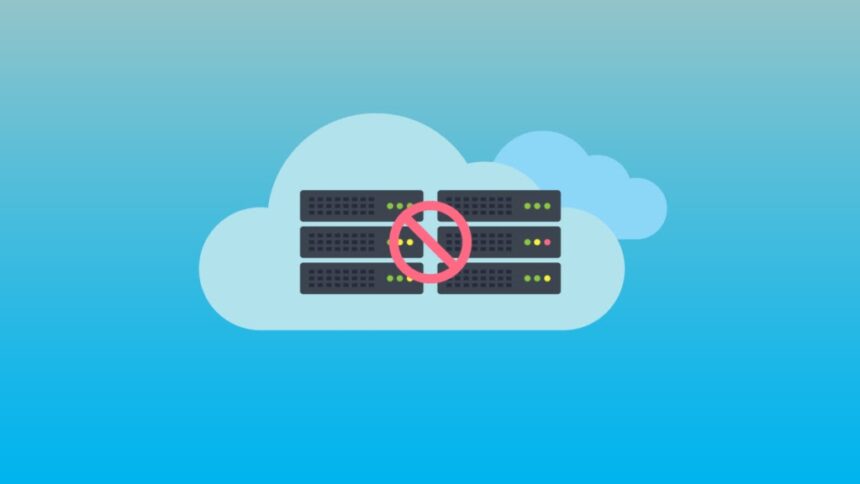Introduction
On the earth of internet website hosting, digital non-public servers (VPS) have lengthy been a staple for builders and businesses in quest of a sturdy and versatile web site internet hosting resolution. A VPS features as a virtualized occasion inside a bodily server, imparting prospects with devoted sources and extra management over their web site internet hosting environment as in comparison with shared website hosting choices. With a VPS, prospects can personalize their server configurations, arrange software program program purposes, and manipulate their website hosting atmosphere with root entry. This stage of management makes VPS a beautiful desire for builders in search of out the scalability, reliability, and general efficiency of their website hosting infrastructure.
Then again, serverless features symbolize a newer paradigm in cloud computing, providing builders a technique to execute code with out the necessity to manipulate the underlying server infrastructure. With serverless features, builders can focus solely on writing and deploying code because the cloud supplier dynamically manages the allocation of assets and scales the infrastructure as wanted. This occasion-pushed mannequin is noticeably scalable and fee-powerful, as prospects most successfully pay for the compute assets ate up through the execution of their capabilities. Serverless architectures are significantly well-suited for packages with unpredictable or intermittent workloads, permitting builders to construct and set up purposes extra efficiently. VPS Malaysia stands proud as a most helpful need for VPS internet hosting Malaysia, supplying pinnacle-notch general efficiency, reliability, and assist tailored to the wants of builders and organizations alike.
II. Understanding VPS
1. Definition and Options
A digital non-public server (VPS) is a virtualized server atmosphere hosted inside a bodily server infrastructure. It operates independently of different digital servers on the identical bodily machine, offering customers with devoted property inclusive of CPU, RAM, storage, and bandwidth. In contrast to shared website hosting, whereby a number of web sites share the identical server sources, VPS provides further manipulation and isolation, akin to a devoted server atmosphere. The important thing capabilities of VPS encompass:
Devoted Assets:
Every VPS instance is allotted devoted sources, guaranteeing common efficiency and stability.
Root Entry:
Customers have full administrative rights of entry to their VPS, permitting them to put in, configure, and management software program program packages and server settings.
Scalability:
VPS might be scaled vertically with the help of upgrading assets like CPU and RAM or horizontally by together with extra VPS cases.
Customization:
Customers can personalize their VPS environment in step with their particular requirements, along with their needs for the working gadget, software program program stack, and server configurations.
2. Use Circumstances and Advantages
VPS website hosting is appropriate for an in depth vary of use circumstances throughout quite a few industries. Some commonplace packages and advantages of utilizing VPS embody:
Net Internet hosting:
VPS is sweet for web site internet hosting web sites, blogs, and e-commerce platforms, providing reliability, efficiency, and scalability for on-line teams.
Improvement and Testing:
Builders can use VPS as a sandbox atmosphere for software program enchancment, making an attempt out, and deployment, enabling them to check with particular configurations and applied sciences.
Software Internet hosting:
VPS can host a complete lot of packages, together with content material management buildings (CMS), purchaser relationship management (CRM) software program packages, and database servers.
Reseller Internet hosting:
VPS could also be partitioned into a number of digital servers, permitting customers to resell web site internet hosting providers to 3rd events, together with internet designers and builders.
3. Key Issues for Builders
When selecting a VPS internet hosting supplier, builders need to recall quite a few components to make sure they choose essentially the most applicable resolution for his or her needs:
Efficiency:
Consider the efficiency metrics, consisting of CPU velocity, RAM capacity, and disk I/O general efficiency, to make sure essentially the most helpful general efficiency in your packages.
Reliability:
Select an organization with a examined report of reliability and uptime, sponsored through the use of redundant infrastructure and durable SLA ensures.
Help:
Search for a internet hosting firm that provides responsive buyer help and technical assist, accessible 24/7 by a couple of channel, along with stay chat, e-mail, and telephone.
Scalability:
Make sure the VPS website hosting plan presents scalability choices to cope with future development and rising support calls for as your purposes improve.
Safety:
Prioritize security options along with firewalls, intrusion detection and prevention buildings (IDS and IPS), DDoS security, and on a regular basis safety updates to guard your VPS environment from cyber threats.
III. Delving into Serverless Capabilities
Definition and Conceptual Framework
Serverless Capabilities, often known as Operate as a Service (FaaS), is a cloud computing model the place builders can execute code in response to actions with out the necessity to handle server infrastructure. On this model, the cloud firm dynamically allocates and scales assets based mostly completely on demand, permitting builders to focus solely on writing and deploying code. Serverless features are usually short-lived, stateless capabilities that carry out exact duties or reply to triggers, which embrace HTTP requests, database adjustments, or report uploads. The conceptual framework of serverless features revolves across the following key elements:
Capabilities:
Serverless Capabilities are particular person units of code that carry out a particular problem or characteristic. They’re occasion-driven and stateless, which suggests they execute in response to exterior events and don’t keep any persistent nation between invocations.
Triggers:
Triggers are occasions that provoke the execution of serverless features. Can encompass HTTP requests, database actions, message queue messages, or scheduled actions.
Execution Atmosphere:
Serverless features run inside ephemeral execution environments equipped by the cloud issuer. These environments are dynamically provisioned and managed by the platform, permitting capabilities to scale mechanically in response to workload fluctuations.
B. Benefits and Drawbacks
Serverless features present a number of advantages and drawbacks in comparison with customary server-primarily-based architectures:
Benefits:
Scalability: Serverless features can scale routinely to handle various workloads, eradicating the necessity for capacity-making plans and useful resource management.
Value-Effectiveness: With serverless features, prospects pay the least for the compute property consumed throughout operate execution, leading to worth financial savings for packages with intermittent or unpredictable workloads.
Simplified Operations: Serverless architectures summary away the underlying server infrastructure, lowering the operational overhead and complexity related to dealing with servers and scaling infrastructure.
Speedy Improvement: Serverless Capabilities allow builders to concentrate on writing and deploying code with out worrying about infrastructure provisioning, configuration, or renovation.
Drawbacks:
Chilly Begin Latency: Serverless Capabilities can even get pleasure from latency troubles all by cold begins, the place the platform provisions a brand new execution atmosphere for a attribute that hasn’t been lately invoked. This will have an effect on response occasions for once-in-a-while-accessed features.
Vendor Lock-In: Adopting serverless features might also result in vendor lock-in, as builders transform depending on the particular options and limits of the chosen cloud firm’s serverless platform.
Restricted Execution Time: Serverless features usually have execution time limits imposed by the cloud issuer, which could additionally limit the sorts of workloads that could be processed inside an single operate invocation.
State Administration: The stateless nature of serverless features requires builders to regulate the utility nation externally, each through continuous storage providers or exterior databases, which provides complexity to stateful packages.
C. Typical Use Circumstances in Improvement
Serverless features are well-suited for a lot of use circumstances in software program improvement, which embrace:
Occasion-Pushed Processing: Processing actions from sources along with HTTP requests, message queues, or doc uploads.
Actual-Time Information Processing: Analyzing streaming information from IoT units, sensors, or logs in real-time.
Microservices Structure: Implementing particular person microservices that perform particular duties inside a much bigger software construction.
Scheduled Duties: Executing periodic duties, which embrace knowledge backups, batch processing, or doc period, on a scheduled basis.
A. Deployment Course of with VPS:
Provisioning VPS: Choose and provision a VPS web site internet hosting plan from the corporate, selecting specs based on enterprise necessities.
Working System Set up: Set up the specified working gadget (e.g., Linux distribution) on the VPS instance, both manually or through a manipulation panel supplied by the website hosting supplier.
Software program Set up and Configuration: Set up vital software program packages and configure the server environment, consisting of the net server (e.g., Apache, Nginx), database (e.g., MySQL, PostgreSQL), and different dependencies.
Software Deployment: Add software program paperwork to the VPS utilizing SSH or FTP, and configure the web server to serve the software program.
Area Configuration: Configure DNS settings to issue the realm into the VPS IP, allowing entry to the deployed utility.
Monitoring and Upkeep: Arrange monitoring tools to trace server general efficiency and uptime and carry out on a regular basis preservation obligations along with software program updates and safety patches.
Deployment Course of with Serverless Capabilities:
Operate Improvement: Write and try the operate code domestically utilizing a serverless framework or enchancment atmosphere.
Cloud Supplier Configuration: Configure the serverless environment on the chosen cloud issuer’s platform (e.g., AWS Lambda, Google Cloud Capabilities), inclusive of putting in the traits, defining triggers, and configuring permissions.
Deployment: Deploy the characteristic to the serverless platform utilizing the equipped deployment gear or command-line interface (CLI).
Set off Configuration: Configure triggers to invoke the characteristic in response to explicit actions, together with HTTP requests, database changes, or scheduled occasions.
Testing and Monitoring: Check the deployed attribute to make sure it behaves as anticipated, and arrange monitoring and logging to trace characteristic general efficiency and errors.
Auto-scaling and Optimization: Make the most of car-scaling abilities furnished through the serverless platform to routinely scale the characteristic based mostly completely on workload wants and optimize attribute general efficiency and costs.
Integration with CI/CD Pipelines:
CI/CD Pipeline Setup: Arrange a continuous integration and continuous deployment (CI/CD) pipeline with using a CI/CD gadget, which incorporates Jenkins, Travis CI, or GitLab CI.
Model Management Integration: Combine the CI/CD pipeline with model management buildings (e.g., Git) to mechanically set off builds and deployments based mostly completely on code commits and pull requests.
Construct Automation: Automate the development course of to gather code, run assessments, and bundle the utility or operate for deployment.
Deployment Automation: Automate deployment duties to put in the utility or attribute to the objective environment (VPS or serverless platform) routinely after profitable builds.
Steady Monitoring: Implement continuous monitoring and remarks loops within the CI/CD pipeline to music deployment popularity, hit upon troubles, and trigger rollback or remediation actions if obligatory.
Iterative Enchancment: Constantly iterate and enhance the CI/CD pipeline based mostly on suggestions and efficiency metrics to streamline the development and deployment workflow.
Conclusion
On this analysis between VPS and serverless features, we have explored the vital traits, deployment strategies, and integration with CI/CD pipelines for each internet hosting alternate options. VPS provides builders devoted sources, full management over server configurations, and flexibility in software deployment. Then again, serverless features present scalability, worth effectiveness, and simplified operations by abstracting away server administration duties. Every approach has its benefits and downsides, making them applicable for distinctive use circumstances and enchancment conditions.
In conclusion, whereas each VPS and serverless features provide distinctive advantages, VPS Malaysia stands out because the premier alternative for VPS internet hosting Malaysia. With its dedication to offering high-performance infrastructure, dependable providers, and responsive help, VPS Malaysia empowers builders and companies to achieve their digital endeavours with confidence and effectivity.









